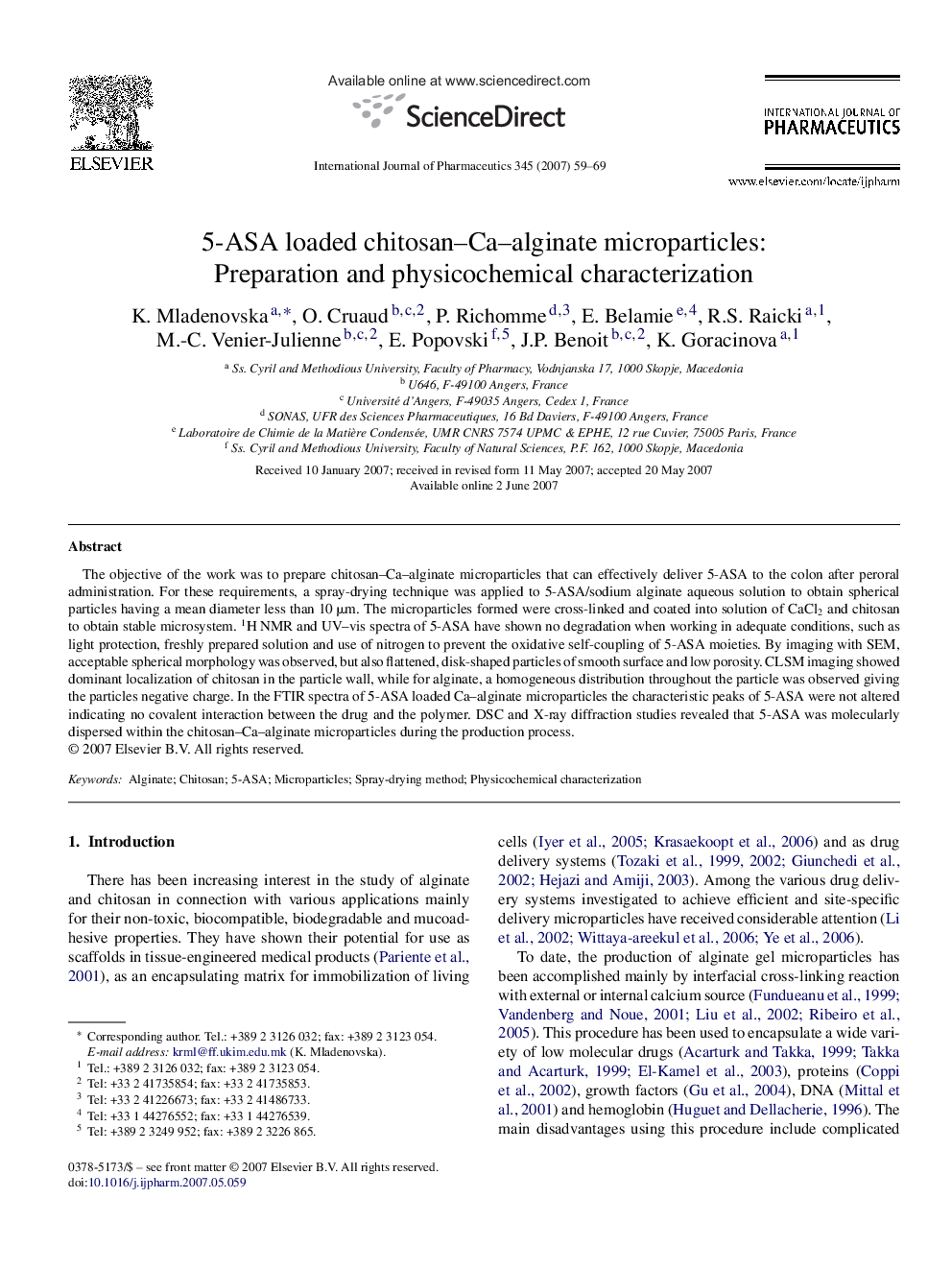| Article ID | Journal | Published Year | Pages | File Type |
|---|---|---|---|---|
| 2505749 | International Journal of Pharmaceutics | 2007 | 11 Pages |
The objective of the work was to prepare chitosan–Ca–alginate microparticles that can effectively deliver 5-ASA to the colon after peroral administration. For these requirements, a spray-drying technique was applied to 5-ASA/sodium alginate aqueous solution to obtain spherical particles having a mean diameter less than 10 μm. The microparticles formed were cross-linked and coated into solution of CaCl2 and chitosan to obtain stable microsystem. 1H NMR and UV–vis spectra of 5-ASA have shown no degradation when working in adequate conditions, such as light protection, freshly prepared solution and use of nitrogen to prevent the oxidative self-coupling of 5-ASA moieties. By imaging with SEM, acceptable spherical morphology was observed, but also flattened, disk-shaped particles of smooth surface and low porosity. CLSM imaging showed dominant localization of chitosan in the particle wall, while for alginate, a homogeneous distribution throughout the particle was observed giving the particles negative charge. In the FTIR spectra of 5-ASA loaded Ca–alginate microparticles the characteristic peaks of 5-ASA were not altered indicating no covalent interaction between the drug and the polymer. DSC and X-ray diffraction studies revealed that 5-ASA was molecularly dispersed within the chitosan–Ca–alginate microparticles during the production process.
